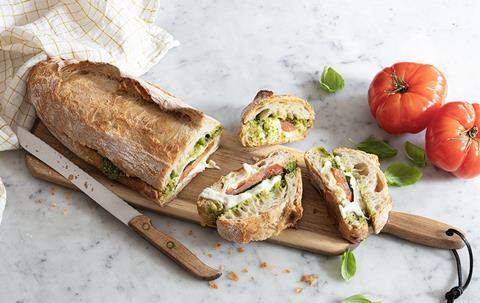
Rising food prices mean consumers are eating out of home less frequently and reducing their average spend when they do, according to baked goods manufacturer Délifrance.
To combat this, the firm has launched a new edition of its Smart Guide called ‘Time Saving & Low Budget Service Solutions’. The guide serves up recipe inspiration designed to help boost sales by encouraging new moments of consumption with recipes for ‘small yet appealing’ light bites and snacks that meet tighter budgets, rather than increasing prices or reducing quality of ingredients.
The recipes are designed to meet concerns around sustainability, changing consumer behaviours driven by digitalisation and social media trends, as well as coping with staff recruitment difficulties.
“Although the foodservice sector is showing strong signs of recovery, operators are now facing a new set of difficulties,” explained Stéphanie Brillouet, marketing director, Délifrance.
“Therefore, we’re pleased to share our expertise in our new Smart Guide which is full of mouth-watering recipes, actionable tips and low-cost solutions to help foodservice operators weather the storm over the coming year,” she added.
Dive into some of the highlights from the report:
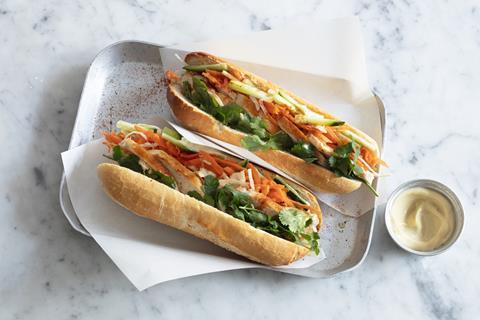
Travel with food
“Discovering new flavours and being surprised and delighted by foreign food is definitely a hit for customers all around the world,” Délifrance stated in the report.
On-trend sandwiches presented by the firm include banh mi packed with chicken and fresh pickled vegetables, ciabatta parmigiana from Italy with roasted vegetables, lashings of mozzarella and tomato sauce, and jambon beurre baguette from France with ham and cornichons.
Focaccia is also gaining pace in the out of home market and online with the number of mentions up by 6% over the past year and the number of interactions reaching more than 20m.
However, Délifrance believes the Italian loaf can be utilised by operators in more ways than as a simple sandwich carrier. It suggests upcycling it into grissini for use as a snack, serving it ‘pizza style’ topped with pear, honey & walnuts for dinner, or popping strips on a board with humous and olives for an aperitivo or snack.
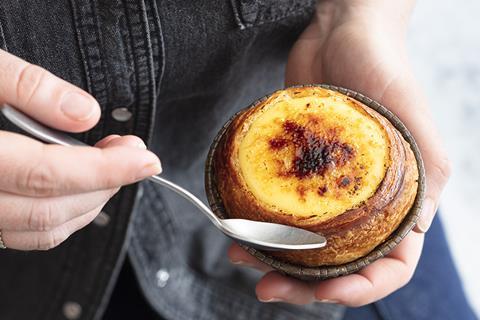
Surf on trends
Croissants are booming on social media as clever bakers and influencers find innovative and appealing ways to utilise the Viennoiserie staple. Notably, croissant mentions online rose by 60% with flat, crispy croissants, croissant toast, and the viral crookie among the most shared recipes (Délifrance x Ipsos Synthesio social listening, 26 w/e 1 July 2024).
Délifrance suggests utilising the croissant as an ice cream sandwich carrier packed with Chantilly cream and strawberries for a summer twist, or loaded with cookie dough and baked to tap into demand for the TikTok and Instagram sensation that is the crookie.
This interactivity extends beyond croissants with sweet or savoury options to entice consumers in real life and online. Crème brulée-stuffed brioche and egg-wrapped piadina are among the ideas provided.

Tap into upcycling fever
Offering recipes based on unsold products from the day or the morning before is a great way to avoid food waste, improve your image, and optimise margins, Délifrance believes.
“Since 2023 upcycled and zero waste recipes are engaging more and more consumers online, with a total amount of 1.8 million interactions until now,” it highlighted.
Despite the recent controversy faced by Gail’s, almond croissants remain a popular option for upcycling day-old pastries but other fillings such as ham & bechamel can draw consumers in. Prior to baking, raw croissants can also be upcycled to puff pastry tarts which can be topped with a host of seasonal food items, making them a year-round sensation.

Pimp up your products
Using a single product in multiple ways has several advantages, Délifrance noted, including streamlining recipes for better cost optimisation, and also utilising freezer space.
What’s more, it offers a pragmatic approach to reducing food waste “because by multiplying sales occasions, we drastically reduce the number of unsold products,” Délifrance said.
“The simple muffin, doughnut, or a more elaborate brioche feuilletée have more than one trick up their sleeve: a tasty breakfast, an indulgent snack, a sandwich, a cooking ingredient,” the firm added.
It’ll also allow operators to use the base product to tap into seasonal ingredients and on-trend flavours by simply switching up the toppings or fillings.



















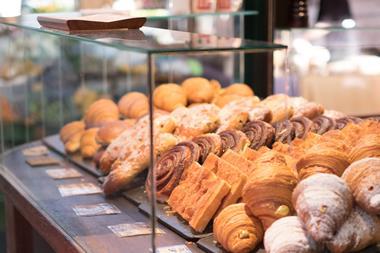



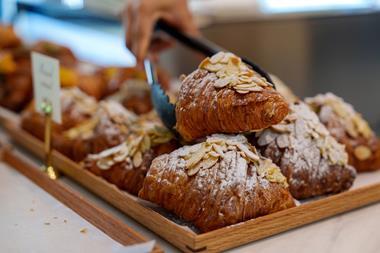
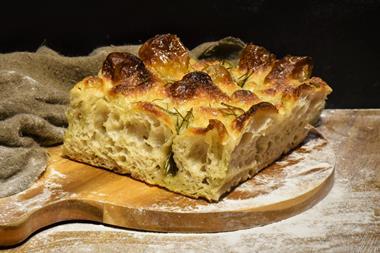
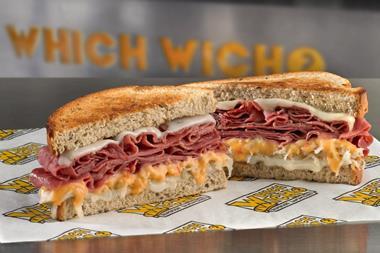
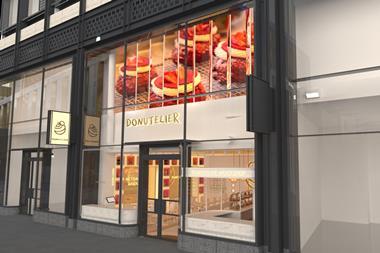
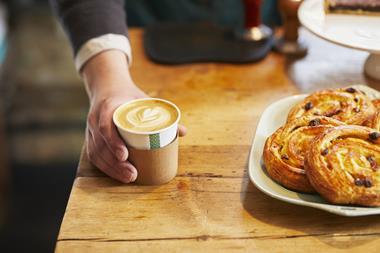

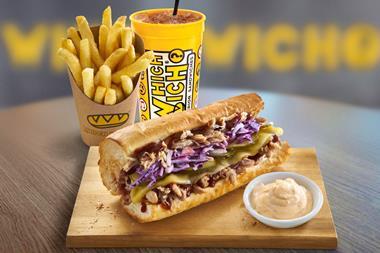


No comments yet